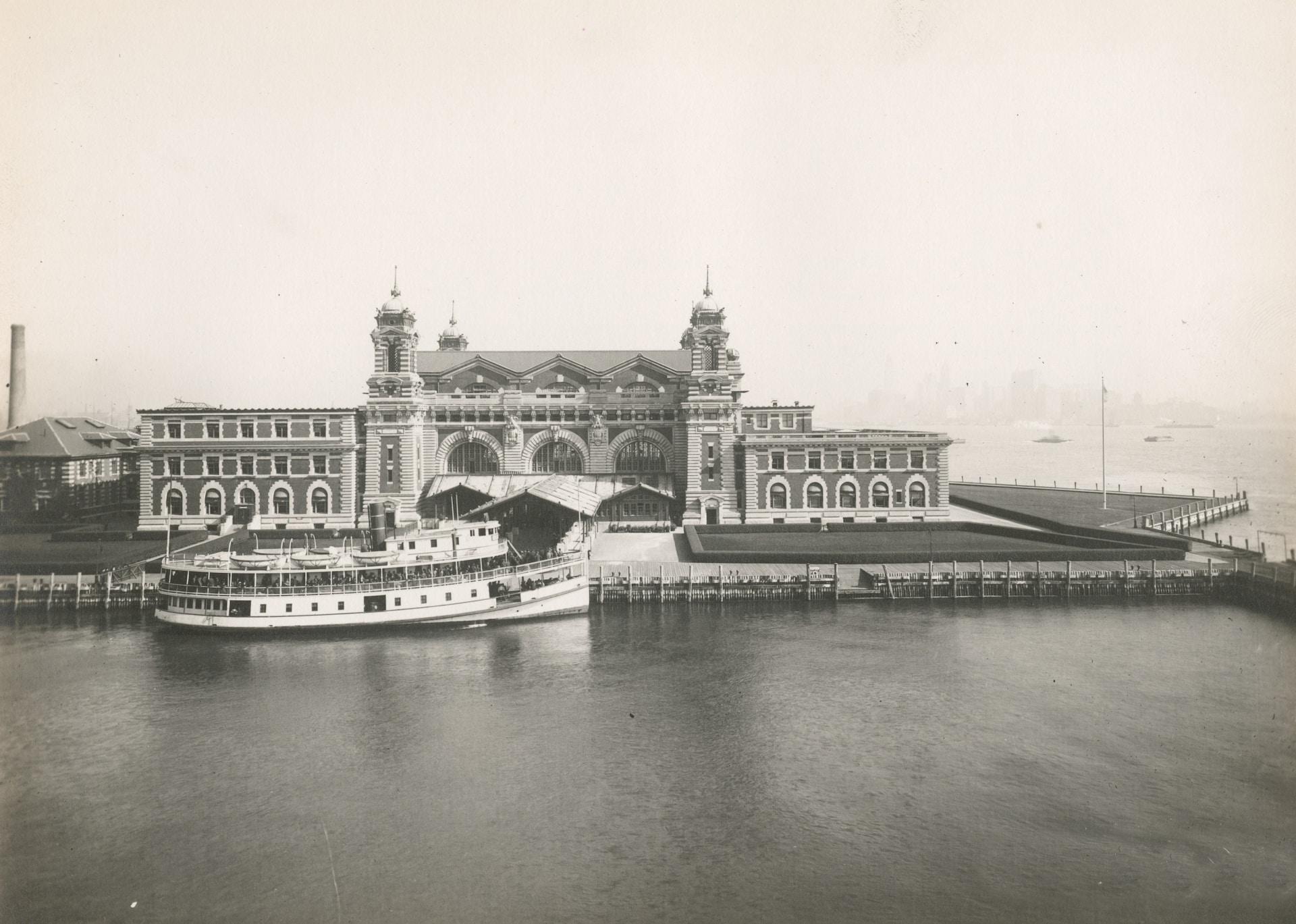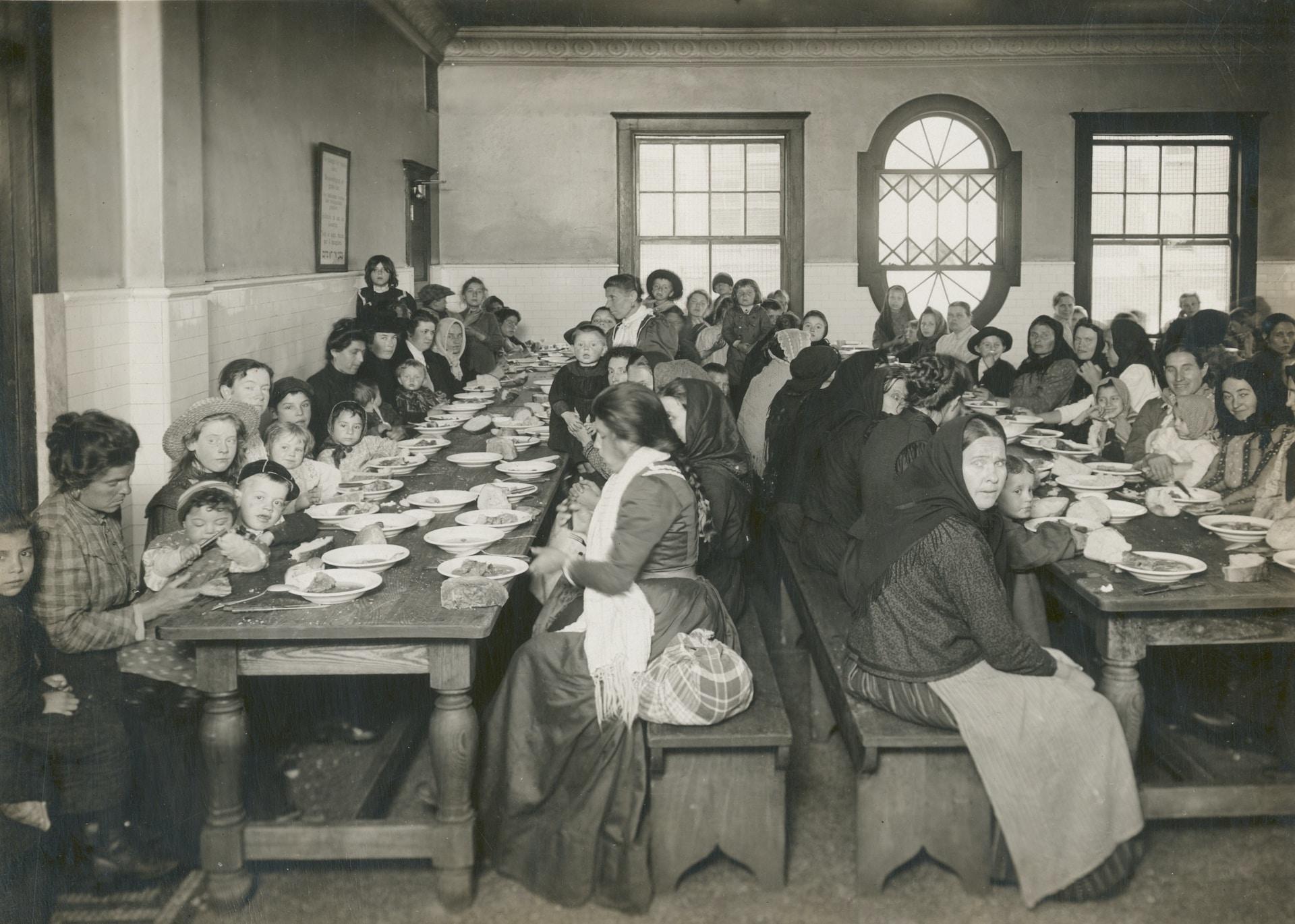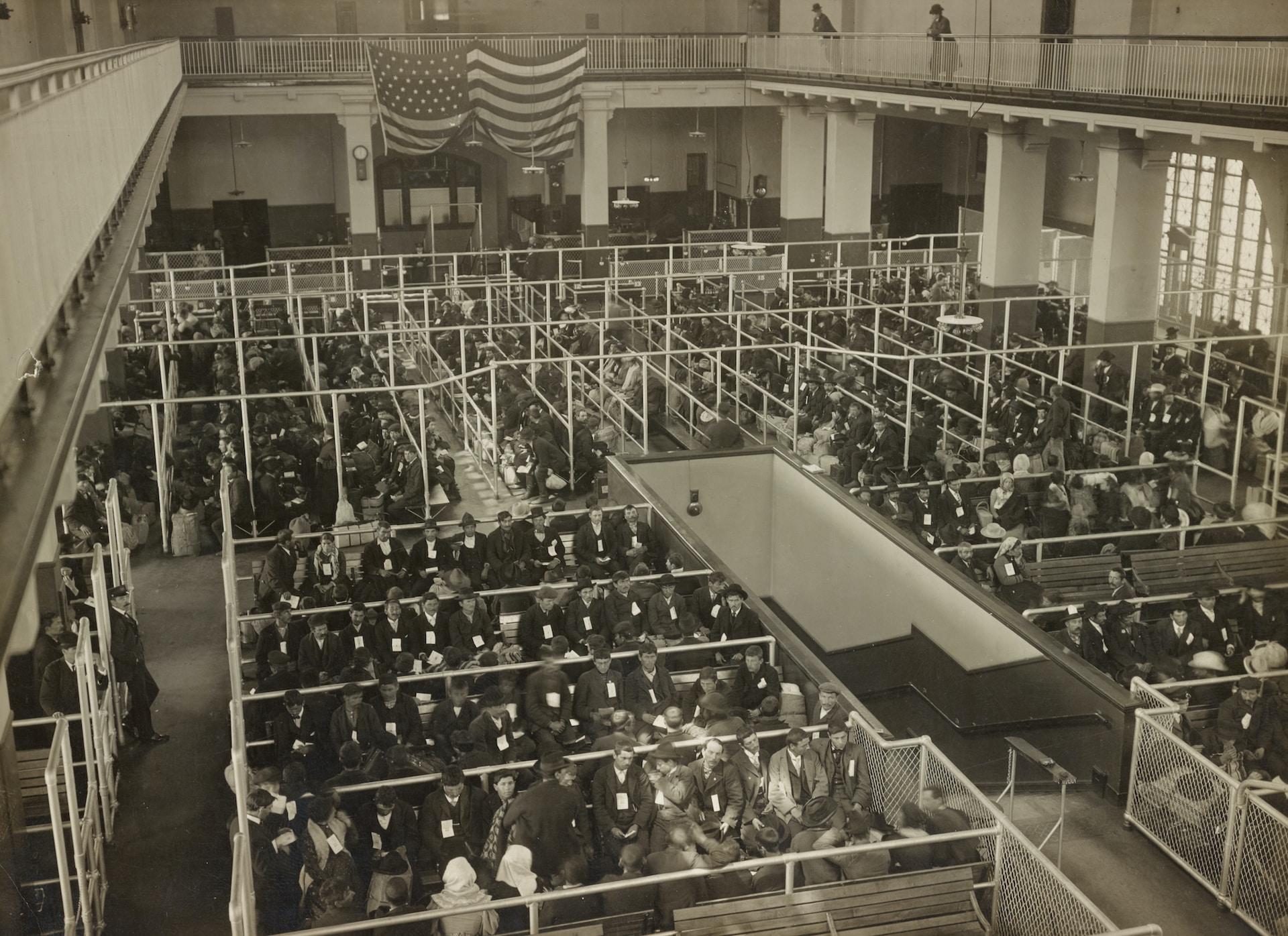Immigration and Deportation History at Ellis island
In this post we are going to delve into the story of this famous island from its earliest history to its iconic use by and connection to millions who entered the US. Our main focus however will be the immigration and deportation history of Ellis Island. If your ancestors passed through this important hub you may want to read on and discover more about what they may have experienced.
What Was Ellis Island?
Ellis island has been a number of things but it is most famous of course for the period in which it was the site of the United States main immigrant inspection and processing station. Millions of immigrants passed through this center while hundreds of thousands were turned away or returned to their home nations via Ellis Island.

In the modern era it makes up part of the Statue of Liberty monument so for tourists and visitors it is only accessible by ferry. An interesting tourist attraction it is open to the public with guided tours running regularly.
History of the Island
Created by receding glaciers over 15,000 years ago Ellis island has been described as little more than a spit of sand in the Hudson River. It was known by the native American Mohegan tribe as Kioshk or Gull Island. In 1630 the Dutch acquired the island, giving it to Michael Reyniersz Pauw, a director of the Dutch West India Company. Pauw named it Oyster island due to the plentiful shellfish found upon its beaches.
Later in the 1760s Ellis Island became known as Gibbet Island due to the gallows constructed upon it to execute those convicted of piracy.
Samuel Ellis
The island's namesake Samuel Ellis was a colonial New Yorker and a merchant who originally came from Wrexham, Wales. Ellis purchased the island in 1774 building a tavern on it that catered for local fishermen.
Over the next 9 years Ellis tried several times to sell the island but did not succeed. Upon his death in 1794 it would pass to his as yet unborn grandson who was also named Samuel. Samuel Jr. however died in infancy so the island reverted to Ellis’s daughters Elizabeth Ryerson and Rachel Cooder.
In 1808 New York State purchased the island for $10,000 and the U.S. War Department paid for the right to use Ellis Island to build military fortifications. It became an ammunition store during the War of 1812 and remained so up to and beyond the Civil War.
During this time immigration grew in the United States allowing all white males residing in the U.S. to become citizens after 2 years of residency. Early on little regulation was required for the immigration but quickly rules became more strict leading to the creation of the Castle Garden immigration center in 1855.
After the Civil War
As early as 1847 the U.S. Army was trying to use Ellis Island “for the convalescence of immigrants. This did not work well but in 1890 the federal government assumed control of immigration. This would lead to the appropriation of $75,000 for the construction of the first federal immigration station on Ellis Island.

The island was expanded in size using engineers and on January 1st 1892 the immigration station officially opened. Teenager Annie Moore from County Cork, Ireland had the distinction of being the first person admitted to the Ellis Island immigration center.
In recognition of this Annie received a $10 gold piece along with a special greeting from officials. She along with her two younger brothers had arrived aboard the S.S. Nevada having traveled in steerage. They left Queenstown in Ireland on Dec 20th 1891 and took just short of two weeks to complete their voyage. Their parents were already resident in New York so they were soon reunited with a story to tell.
Annie and her brothers were just part of the approximately 700 people to pass through Ellis Island on that day and some 450,000 who arrived in the center's first full year. This was just the start of rapid immigration that would eventually be slowed by anti-immigration sentiments around the First World War.
The First World War
When the U.S. entered WWI in 1917 attitudes to immigration quickly changed. German immigrants attempting to enter the country were stopped, detained and sent home. Rather than being an immigration hub it became a hospital for the U.S. Army, a Naval way station and a detention center for enemy aliens.
Even after the war new rules started to come into effect with limits being placed on the number of immigrants being allowed into the U.S. The number was capped based on the immigrants' point of origin. Moving forward the island became more of an immigrant detention center and started to fall into disrepair. By 1954 Ellis Island officially closed and became surplus property.
How Many People Passed Through Ellis Island?
Spanning its active years of 1892 – 1954 Ellis Island saw almost 12 million people arriving at the Port of New York and New Jersey. These people all passed through immigration at Ellis Island, some being permitted entry while others were detained and potentially returned to their nation of origin.

How Many People Were Deported from Ellis Island?
Not only were individuals stopped, detained and returned home to their places of origin at Ellis Island but some were actually arrested having already been admitted, taken to the island and subsequently deported.
Roughly 20% of all the people who passed through Ellis Island were at least temporarily detained while officials determined their eligibility to enter. Factors such as health concerns. Being a stowaway, alien seaman, anarchist, Bolshevik criminal or those judged immoral could trigger detention. Women could not leave the island with a man who was not related to them meaning unescorted females even with children could be detained.

Around 120,000 immigrants were deported from Ellis island during its over 50 year history with more than 3,500 dying while still on the island. There were over 60 diseases and disabilities that Ellis Island doctors were on the lookout for which would disqualify individuals from entry into the United States.
If immigrants were suspected of suffering any disqualifying condition they would be given a chalk mark which would tag them for further inspection. One condition that required a very uncomfortable test was trachoma, a contagious eye condition. Island doctors would use a button hook to turn immigrants' eyelids inside out in search of signs of the condition.
Final Thoughts
A golden age of American immigration passed through Ellis Island with millions of individuals from around the world coming for their own slice of the American dream. Ellis Island saw almost 12 million immigrants in its short history, roughly 2% of which were turned away.
Link To or Reference This Page
We spent a lot of time downloading, cleaning, merging, and formatting the data that is shown on the site.
If you found the data or information on this page useful in your research, please use the tool below to properly cite or reference Name Census as the source. We appreciate your support!
-
<a href="https://namecensus.com/blog/immigration-and-deportation-history-at-ellis-island/">Immigration and Deportation History at Ellis island</a>
-
"Immigration and Deportation History at Ellis island". NameCensus.com. Accessed on May 8, 2024. https://namecensus.com/blog/immigration-and-deportation-history-at-ellis-island/.
-
"Immigration and Deportation History at Ellis island". NameCensus.com, https://namecensus.com/blog/immigration-and-deportation-history-at-ellis-island/. Accessed 8 May, 2024
-
Immigration and Deportation History at Ellis island. NameCensus.com. Retrieved from https://namecensus.com/blog/immigration-and-deportation-history-at-ellis-island/.
